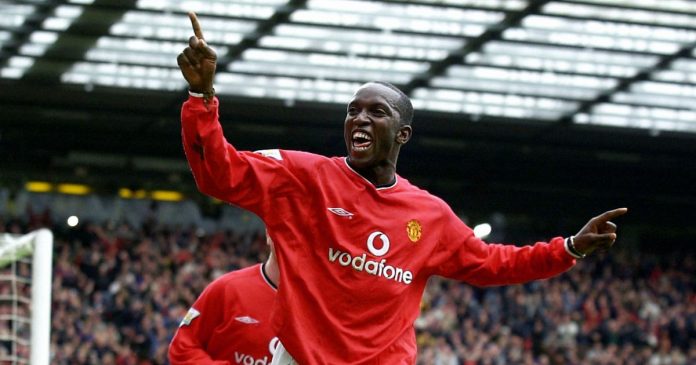With the transfer window now closed the Premier League sits in a stronger position than when it opened this summer, while La Liga is left with some ghostly vacancies having seen a whole host of its quality players depart for England and other major European leagues.
The Premier League spent a combined £628 million on transfers during the window just gone (Telegraph).
In Spain, despite the top two splashing out on Gareth Bale and Neymar, La Liga still made an overall profit of £95 on transfers by the time the window closed (Independent).
This has led many to speculate that Spain might become a league which sells its best players annually, a tradition which is usually associated with Ligue 1 in France or the Dutch Eredivisie.
In an article for World Soccer magazine, Sid Lowe points out that during the 2010 World Cup the Spanish squad consisted of 20 La Liga players and 3 players from the English Premier League, whereas the current Spanish squad boasts only 13 La Liga players, with 8 now playing in England, and one each in Germany and Italy. With the exception of Barcelona and Real Madrid, the quality of Spanish football is in danger of declining as quality players head for foreign shores.
Although it is currently in its early stages, there is an exodus taking place in La Liga and Sid Lowe points the finger of blame at the crippling debts that teams like Valencia and Malaga have been carrying. Over a period of a few seasons Valencia have offloaded quality players like David Villa, Juan Mata, David Silva and, most recently, Roberto Soldado. Malaga have also seen a mass exodus with Isco, Santi Cazorla and numerous others departing in the wake of the club’s financial collapse. Yet it isn’t just high profile teams that have been selling their stars. Michu, who has been a revelation for Swansea City since departing La Liga, was bought for a meagre £2 million from Rayo Vallecano, and went on to score 22 goals in his first season for Swansea, leading them to victory in the Capitol One Cup.
Spanish clubs currently owe a combined €660m to the Inland Revenue (World Soccer), and the direction of transfer activity in Spain is starting to reflect that debt.
So how does this affect the Premier League? A large percentage of the players departing La Liga are heading for England. Some commentators worry about the lack of opportunities for English players in the Premier League as a result, including Roy Hodgson who is concerned about the number of players in the English national team who are not getting first team football domestically.
Paul Hayward of The Telegraph argues that up and coming English footballers are in danger of being overlooked with the influx of foreign talent, but he contradicts that sentiment in the very same article by introducing a second argument. Firstly he bemoans the fact that the world’s best players have not moved to English clubs, the likes of Cavani, Falcao and Thiago Alcantara. However, he then goes on to criticise the departures of Steven Caulker, Scott Parker and Tom Huddlestone from Spurs as evidence of English players being shunned and replaced by foreign stars.
Hayward seems unsure of what direction he wants the Premier League to move toward, a league that ships in the world’s best or a league that nurtures homegrown talent. The reality is that the Premier League can be both, and the ‘cold truth’ that Hayward is clumsily trying to digest is that young English footballers are just not as technically proficient as their Spanish counterparts.
This is a cause for concern in a league in which numerous managers are beginning to strive for an exciting, fluent brand of football. The likes of Roberto Martinez, Michael Laudrup, Manuel Pellegrini, and Pochettino at Southampton, all advocate a high-paced, expressive style of football.
Exciting football philosophies require significant and consistent financial backing. A key question is whether the Premier League’s current financial strength is sustainable in the long term? David Conn of The Guardian believes so. He pinpoints TV revenue as the most notable source of financial strength, reinforced even further this season with BT’s efforts to compete with Sky in the football broadcasting market. Even mid-table clubs like Norwich and Southampton have been able to spend over £20 million each on transfers with the aid of such revenue, while West Ham, West Bromwich Albion, Cardiff City and Crystal Palace all smashed their previous transfer record this summer.
In Spain, TV revenue is not as widely received due to a system in which each club must effectively sell its own TV rights package. The result is that Real Madrid and Barcelona alone account for 50% of the money gained on TV rights. Sevilla president Jose Maria del Nido has strongly criticised this financial imbalance, claiming that the ‘Scottish Premier League is more competitive than the Spanish league’ (Football Espana). He has regularly voiced his belief that the sale of TV rights should happen on a collective, all-inclusive basis in Spain, as it does in England. Until that happens, mid-table Spanish clubs will not be as active in the transfer market as their English counterparts, and La Liga will remain an imbalanced league.
For now, the power lies with financially stable English clubs, buoyed by increasing TV rights revenue, as Spanish clubs continue to part with quality players in the search for financial solidity and respite.
Add Sportslens to your Google News Feed!







